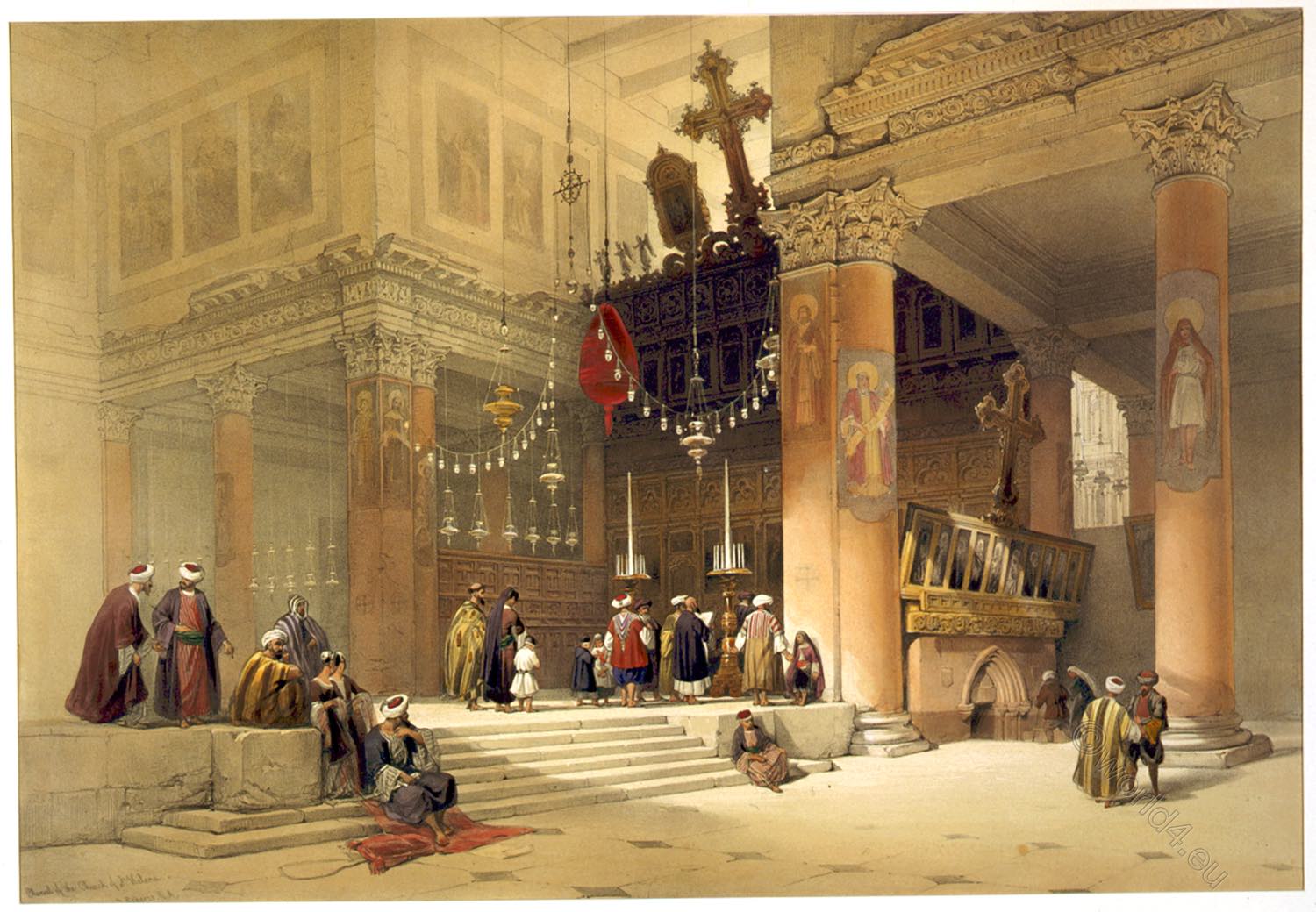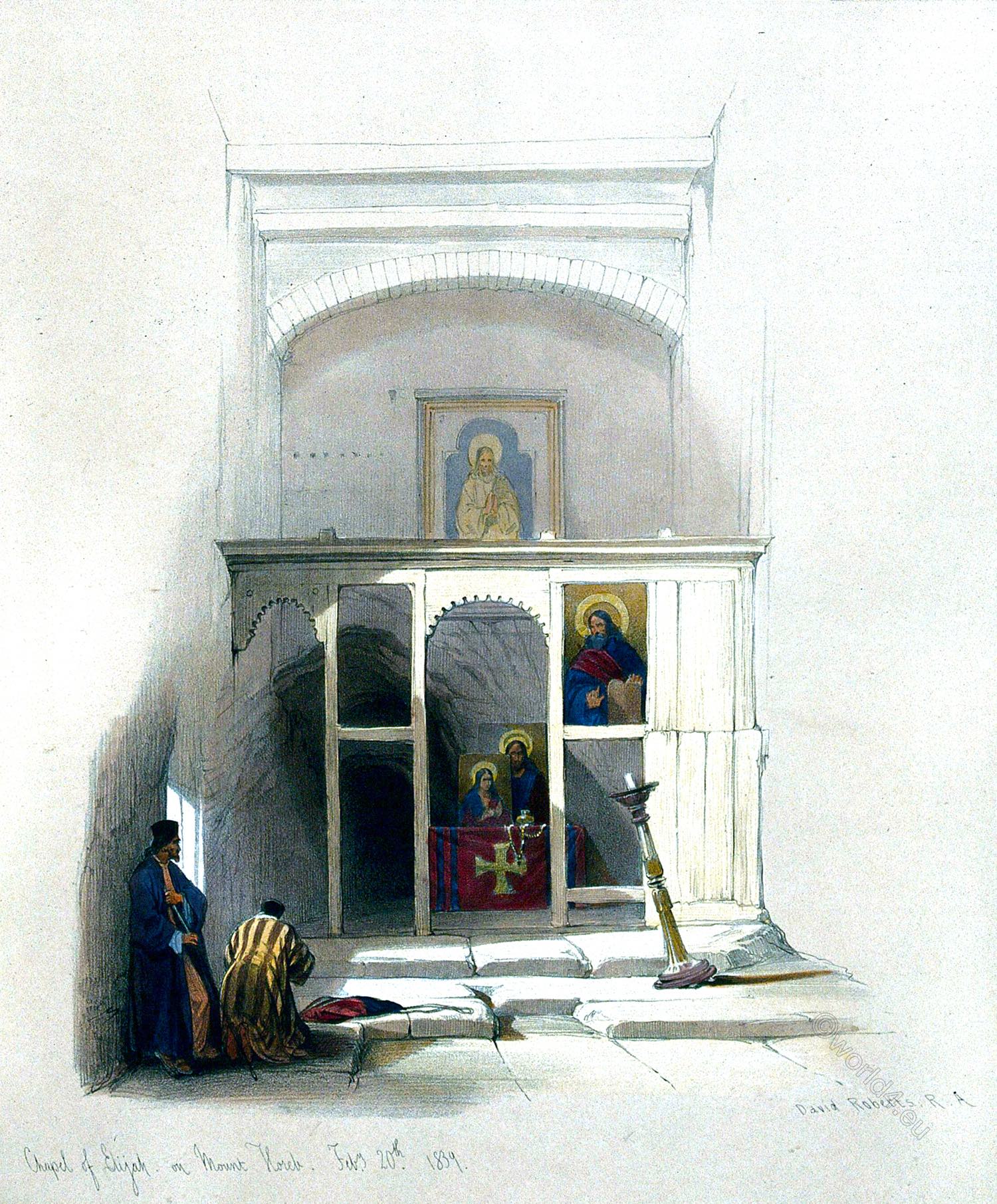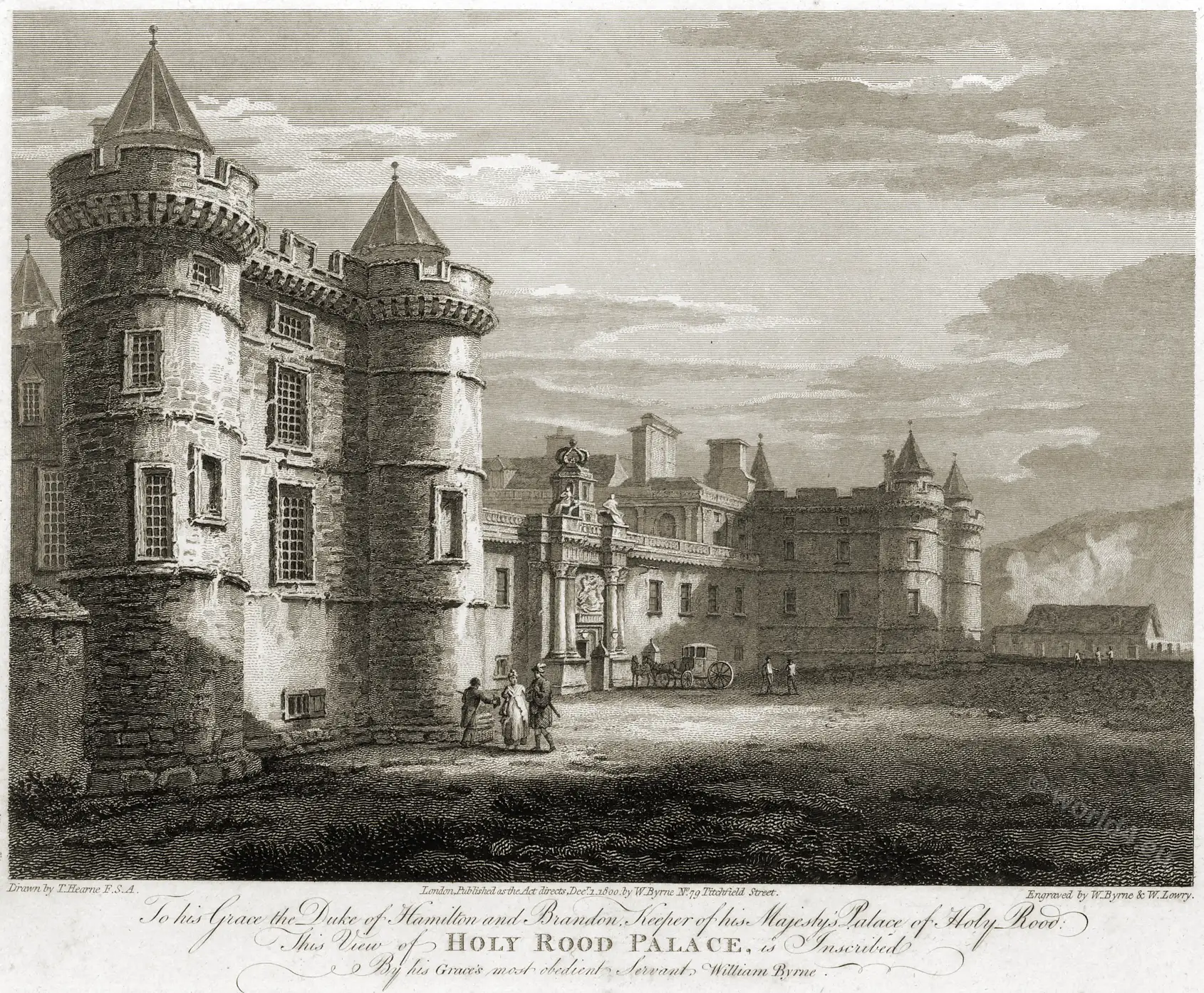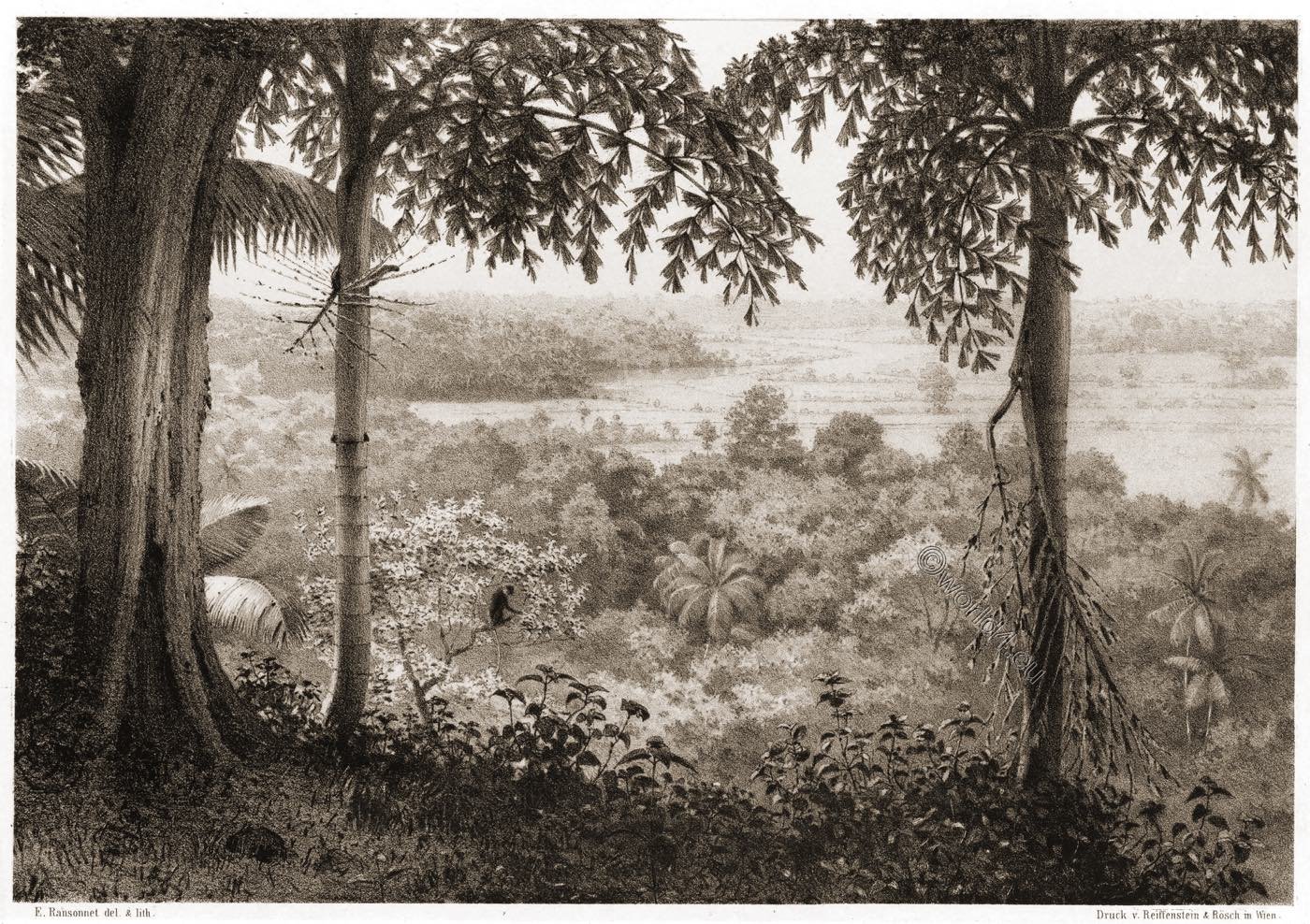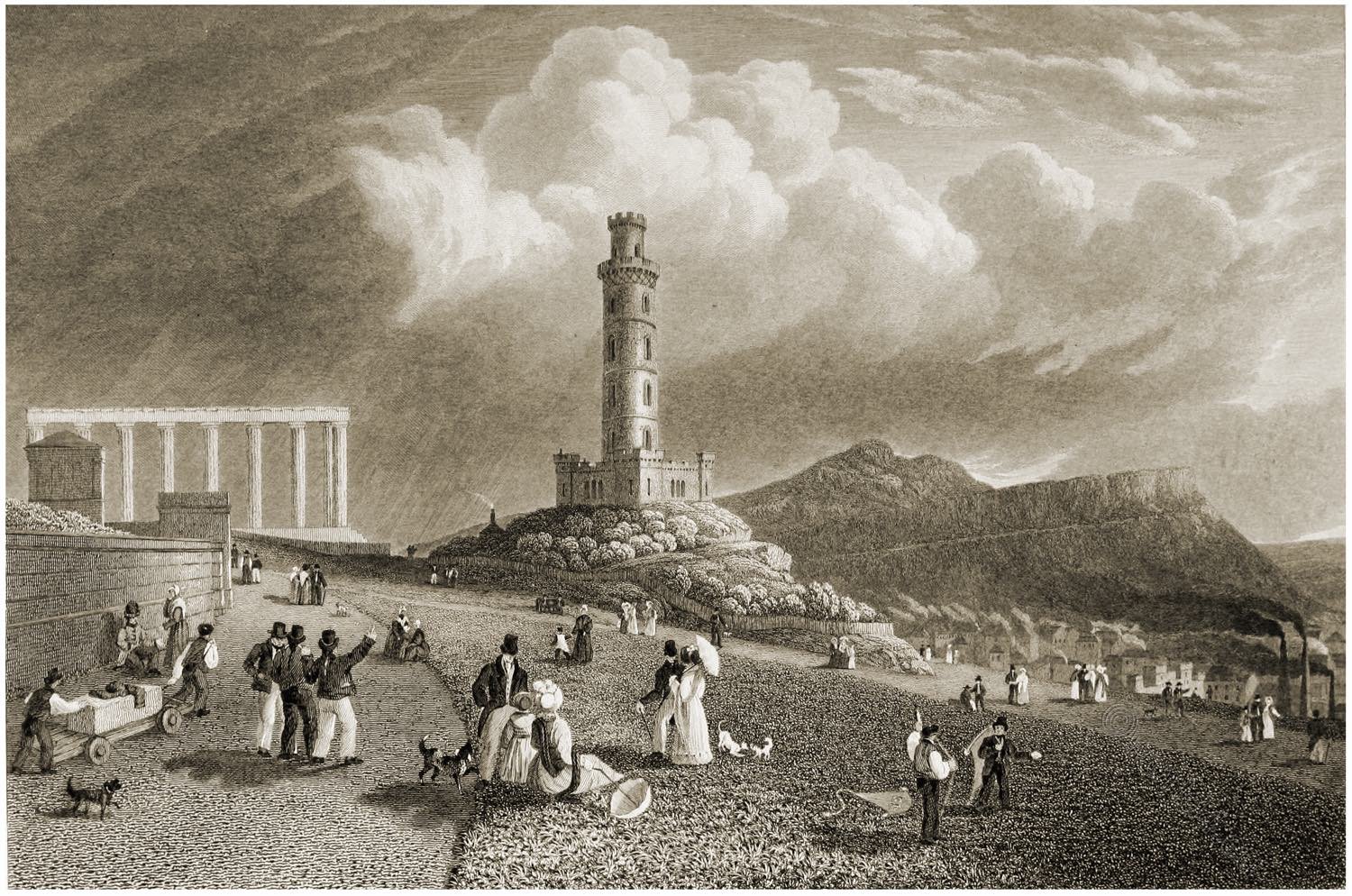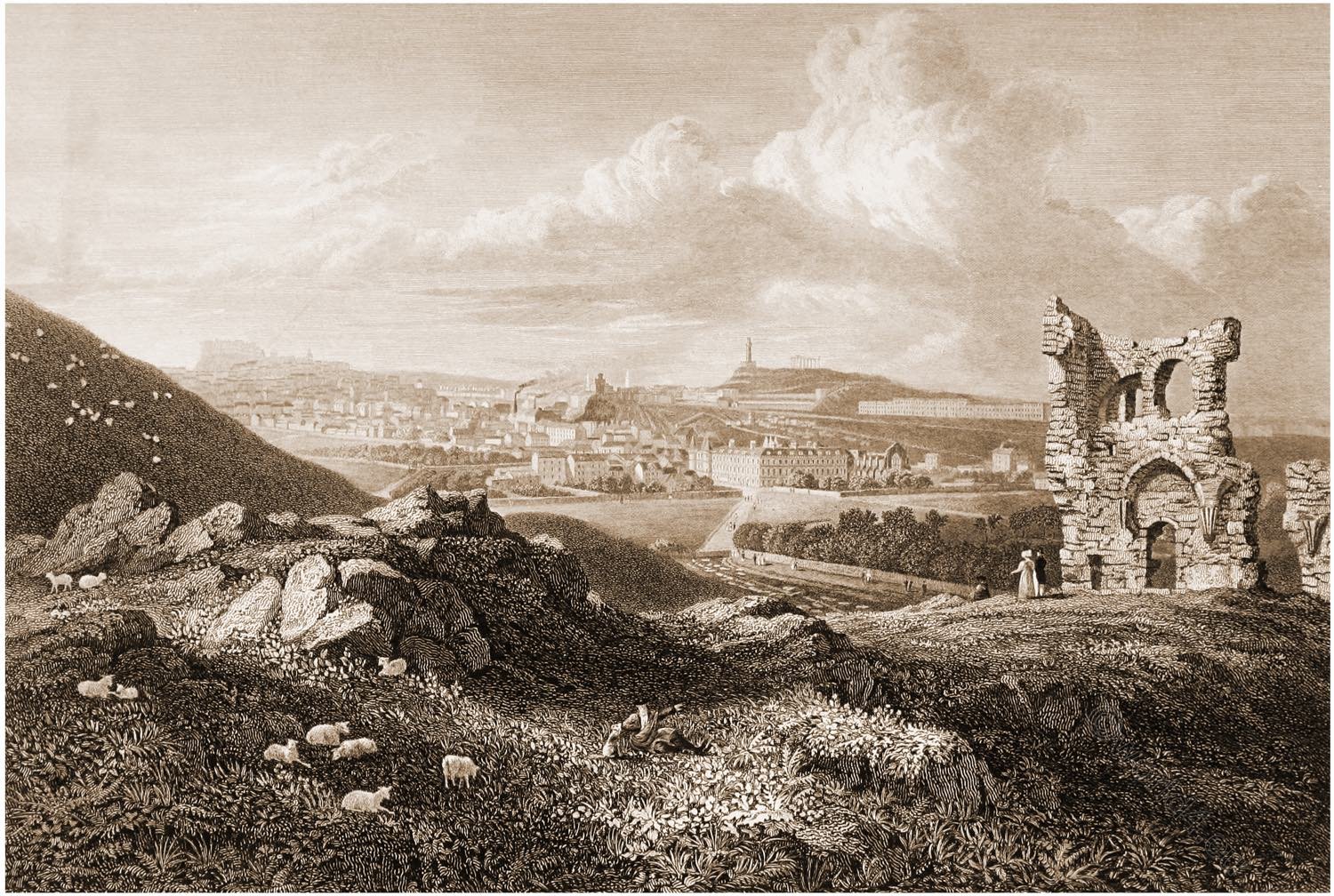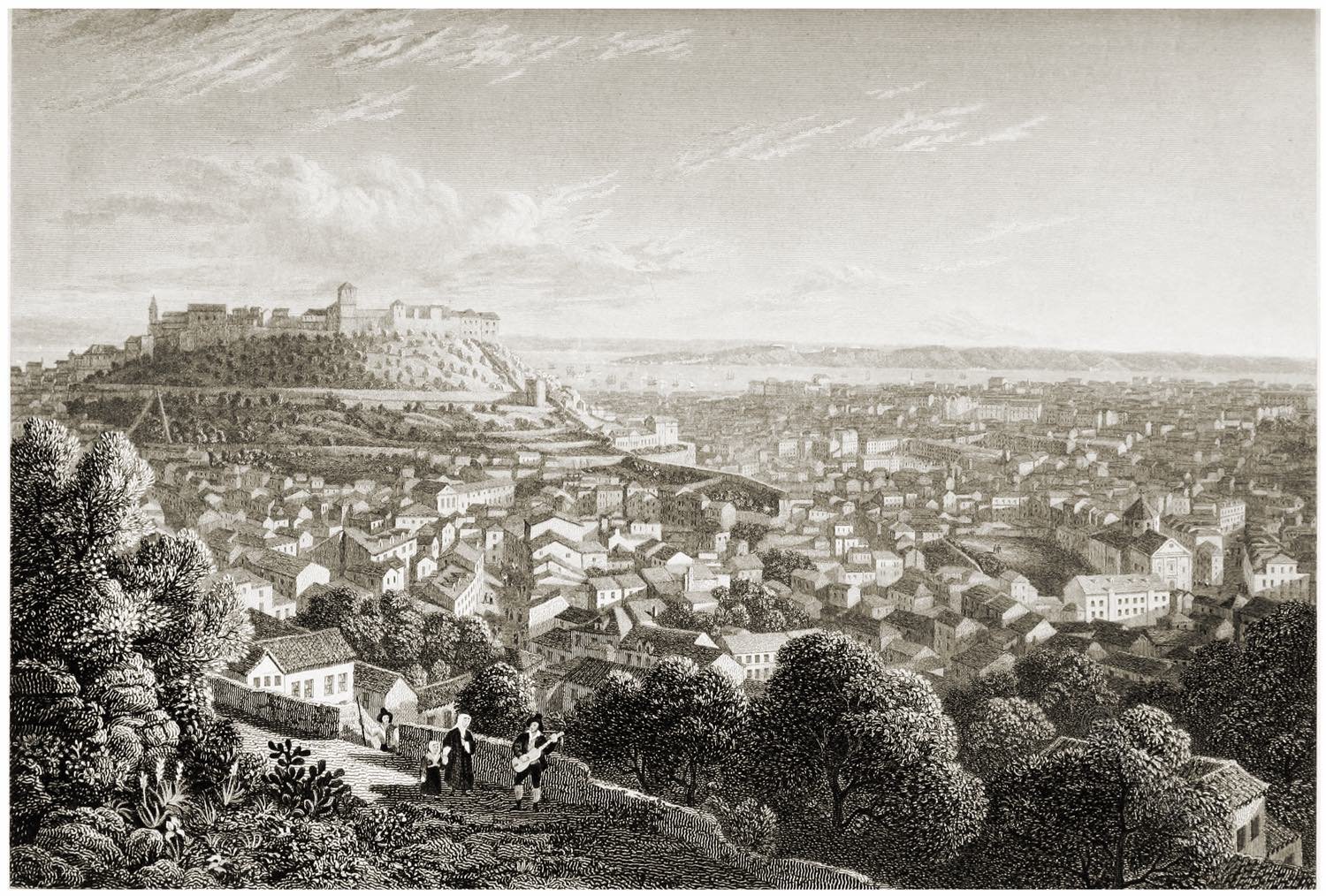
LISBON. FROM THE CHAPEL HILL OF NOSSA SENHORA DA MONTE.
One of the most comprehensive views of the city of Lisbon may be obtained from the above-named eminence, within a short distance from the Chapel of Nossa Senhora da Monte. From this elevation, the spectator, on turning to the south, has before him the principal part of the busy capital.
The Castle Hill, crowned by a variety of buildings, and encircled by the old walls of its Moorish fortifications, stands conspicuously on the left. Its northern slope is planted with olive-trees, which add to its picturesque appearance, and afford an agreeable relief to the eye in this widely extended scene of a dense and populous city.
On the right hand is another range of heights, less elevated than the Castle Hill, but covered with buildings, amidst which churches, convents, and hospitals, form prominent objects. The valley, in the centre of the view, appears from this point to be choked up with an almost impenetrable labyrinth of houses. This is, however, now the most regular portion of the capital.
Having been that part which suffered most severely from the great earthquake of 1755, it has since been rebuilt upon a uniform plan, with its streets intersecting each other at right angles. In this quarter also are the two principal pracas, or squares, in the city. The largest of these is the Praça do Comércio, opening to the south upon the broad expanse of the Tagus. Here formerly stood the Royal Palace, which was almost instantaneously destroyed by the same memorable earthquake.
The centre of this square is ornamented by an equestrian statue of King Joseph I. The other square is situated a little more to the north, about the centre of the valley. It is called the Rocio, and was formerly styled the Square of the Inquisition, from that tribunal having held its sittings in a large building at its northern extremity.
The Castle Hill conceals from our view a portion of the ancient city, which, it is remarkable, escaped with comparatively trifling damage from the earthquake, though immediately contiguous to the part just described, which, in a few moments, was rendered a complete mass of ruins, burying thousands of the wretched inhabitants. Beyond the Tagus, the heights of Almada are seen bounding the view, and extending westward towards the sea.
Source: Select views of some of the principal cities of Europe by Robert Batty. London: Moon, Boys, and Graves, 1832.
Continuing
LISBON.
Convent of St. Geronymo, Belem.
Lisbon, from the Rua de San Miguel.
Lisbon, from the Chapel Hill of Nossa Senhora da Monte.
Lisbon. The Largo do Pelourinho.

